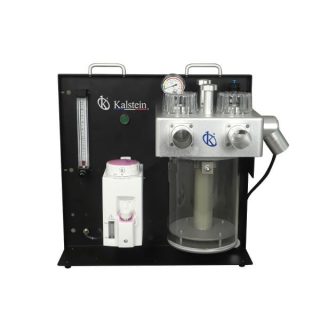The history of veterinary anesthesia has traversed a fascinating path from its uncertain beginnings to the modern and precise machines we see today. What started as simple efforts to calm animals during surgical procedures has become a meticulously tuned science and technology that ensures the highest level of care and safeguard for our animals.
The use of anesthesia in veterinary medicine began in the 19th century, largely inspired by advancements in human anesthesia during the same period. Much like with humans, ether and chloroform were initially used on animals. Although these methods were rudimentary and carried significant risks, it marked the beginning of an era that would forever change veterinary surgery.
From Injectable to Inhalation – The Veterinary Anesthesia Revolution
Following the second world war, veterinary anesthesia underwent a revolution with the advent of injectable anesthetics. Although inhalational anesthetics continued to be used, injectables allowed for greater stability and safety, providing veterinarians with a more reliable tool.
The development of the veterinary anesthesia machine came as a result of constant efforts to improve the safety and efficiency of these anesthetic practices. In its early stages, the machine consisted of a precision vaporizer to administer inhalation anesthetics and a rudimentary system for distributing oxygen and eliminating carbon dioxide.
21st Century and the Era of Personalization
In the 21st century, veterinary anesthesia machines have evolved to allow unprecedented precision in administering anesthetics. Today, these machines are capable of delivering specific gas mixtures for each animal, taking into account factors such as age, size, breed, and underlying health conditions. This customization of anesthesia has dramatically reduced the risks associated with anesthesia in veterinary medicine.
Moreover, current machines are equipped with modern technology for continuous health monitoring of the animal during the procedure, allowing veterinarians to adjust anesthesia in real time. The use of advanced sensors and alarms also enhances safety by alerting staff if concerning changes occur in the animal’s vital signs.
Towards a Future Conscious of Animal Health
The journey already taken by the veterinary anesthesia machine is impressive, but it is undeniable that there are still challenges to overcome. The future of veterinary anesthesia will likely see even more sophisticated developments in animal state monitoring and in the precision of anesthetic administration.
In conclusion, the evolution of the veterinary anesthesia machine is a vivid example of progress in medical technology and the constant desire to provide the best possible care for our animal companions. Undoubtedly, this field will continue to advance and evolve in the years to come, further improving the safety and efficacy of surgical procedures in animals.
If you want to know the catalog of high-end products that we have for you at KALSTEIN, visit us at https://kalstein.co.nz/. We also assure you that through our online PURCHASE channels, which are very easy and viable, you will find the best PRICES on the market. Remembering that we are a MANUFACTURING Company of high-level Laboratory Equipment for SALE. https://kalstein.co.nz/category-product/veterinary-sector/veterinary-anesthesia-machine/

